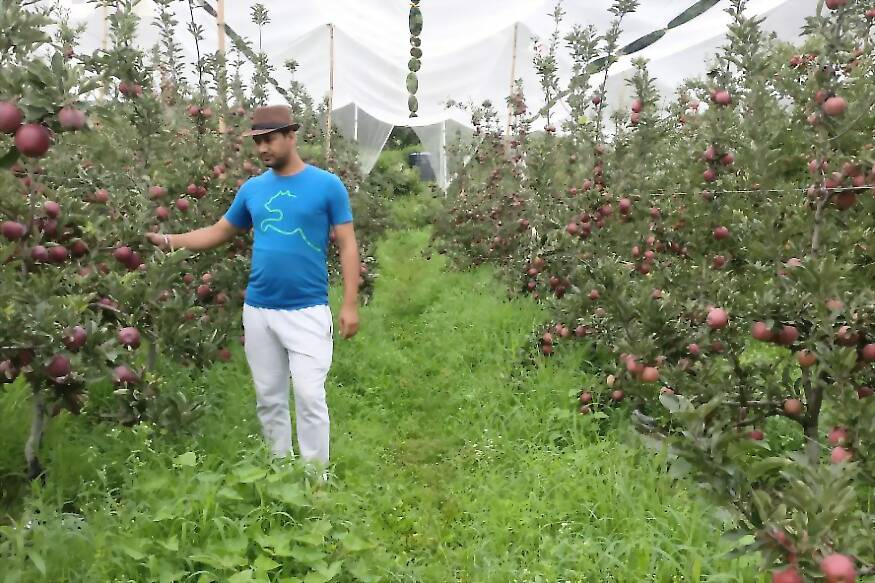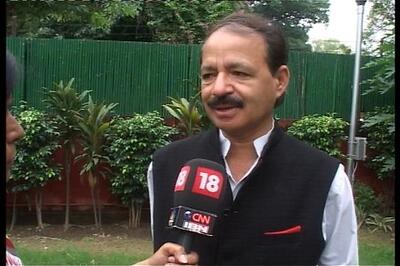
views
The world just survived its hottest ever July on Earth and it is predicted that 2019 may be the second hottest year on earth after 2016.
In India, July was preceded by a long dry spell due to the absence of any pre-monsoon showers, causing a drought-like situation in several parts of the country. Now many states are battling severe flood. Last week, in a single day, the total rainfall in the state of Karnataka was five times more than the normal.
Rainfall in many parts of the state of Karnataka was 10 to 20 times higher than the long-term average of the day. Down to Earth magazine reported that Mysuru received 32 times higher rainfall, which was equivalent to more than 3,000%, the long-term average of day. Till Saturday massive flood had killed 24 people and ruined property worth more than 6,000 crore in the state.
Like Karnataka, many parts of Maharashtra also drowned in the floods. Down south, the woes of Kerala were compounded by the landslides triggered by heavy downpour. In north's Bihar, the water has receded in major flood-affected parts, but it claimed more than 125 lives and devastated crops worth several hundred thousand rupees. It is important to note that before the floods hit Bihar, extreme heat waves had killed around 200 people in the state.
Expert see global warming as a definite reason behind such an extreme and unpredictable pattern of changing weather.
“We are seeing the change in our monsoon. More extreme. More variable. Clearly, we are impacted (by climate change).” says Sunita Narain, Director General of Centre for Science and Environment (CSE).
The new Intergovernmental Panel on Climate Change (IPCC) special report 'Climate Change and Land', released last Wednesday, throws light on desertification, land degradation and food security vis-a-vis climate change. The report warns against the growing impact of climate change and says the ecosystems earlier were never under such severe threat as they are today. It says that the climate crisis is reducing the ability of the land to sustain the growing population.
The report warns that climate change may cause food supply instability and prices may shoot up beyond control. It projects a 23% rise in the price of cereals by 2050.
However, changing the crop pattern and food consumption habits may be helpful. As industrial food production at large scale consumes too much energy (since it requires an enormous amount of water and feed for cattle rearing and also uses electricity for commercial production of meat), certain crops like paddy demand too much water to grow it.
"The IPCC report on land use shows that the current impact of climate change cannot be solved by a silver bullet. As much as countries need to decarbonise and switch to renewables, they are also required to undertake reforms in agriculture and farming, and prevent land from becoming a source of emissions, which is a possibility if left unchecked,” says Dr Ajay Mathur, Director General, The Energy and Resources Institute (TERI).
India’s geography and dependence on monsoon for agriculture makes it more vulnerable towards the impact of climate change. With a 7,500-kilometre coastline, more than 10,000 big and small glaciers in the Himalayan region and different agro-climatic zones, India is highly sensitive to global warming.
In such a scenario, the degradation of land becomes another big problem. The IPCC report says that 23% of the world’s geographic area is degraded. In India, 30% of the land is affected by degradation due to multiple reasons, including deforestation. Besides, more than 50% of India’s agriculture still remains rain-fed and any fluctuation, delay or advancement of monsoon critically affects the productivity.

Joginder Singh, an apple grower in Himachal, says the crops is affected by increasing temperature.
News18 spoke to farmers in different states to know the impact of changing weather and climate on agriculture.
“Our apple production is affected badly. It doesn’t grow now at lower heights. It has moved up.” says Joginder Singh, an apple grower in Rohru in Himachal Pradesh. “We have seen the changes in the last 10 years as the temperature has increased.”
Similarly, farmers of states like Assam, Bihar, Maharashtra and Karnataka have suffered huge losses due to extreme heat, drought and floods in a single year.
“Farmers are shifting the time of crop-sowing to adjust to the changing weather. However, it affects the productivity,” says Kishan, a 38-year-old farmer in Haryana who grows millets and other crops.
Farmers are bracing for a tough battle as the IPCC report warns that land degradation and climate change are cyclic processes.
“Climate change is projected to alter land conditions with feedback on regional climate... Desertification amplifies global warming through the release of carbon dioxide linked with the decrease in vegetation cover (high confidence),” the report says.
In such a scenario, with a population of 1.3 billion, India needs to act urgently on this front and increasing its green cover may be a key step.
“With respect to India, the report presents a strong signal to strengthen nature-based solution and provides a reminder to take our goal towards afforestation seriously. It also brings to light the important role of our forest communities in managing the vital forest ecosystem," says Dr Mathur.




















Comments
0 comment